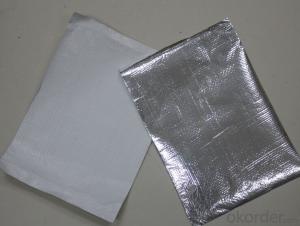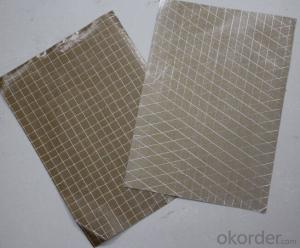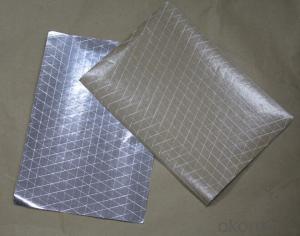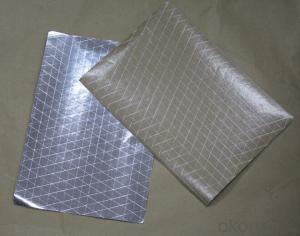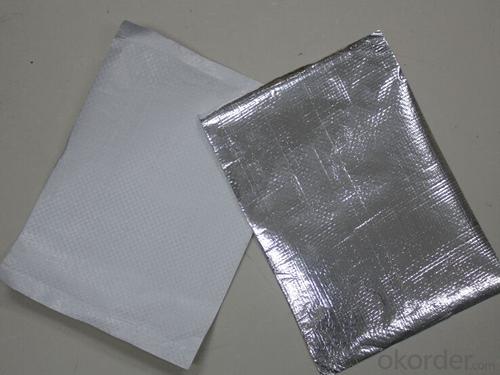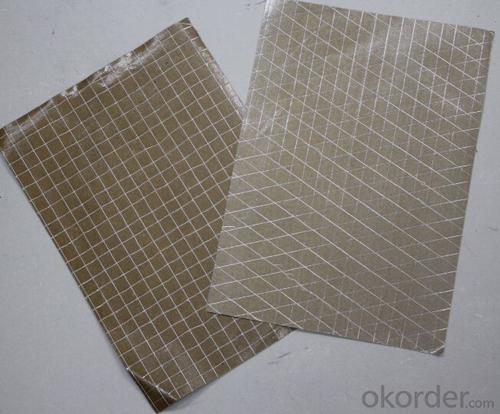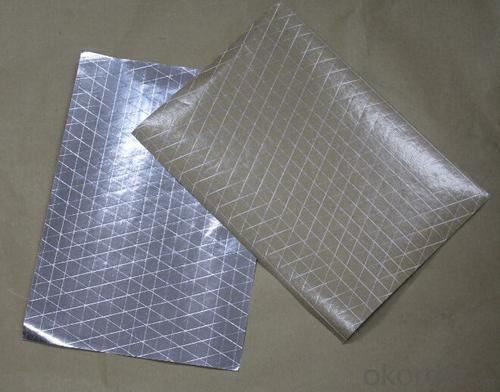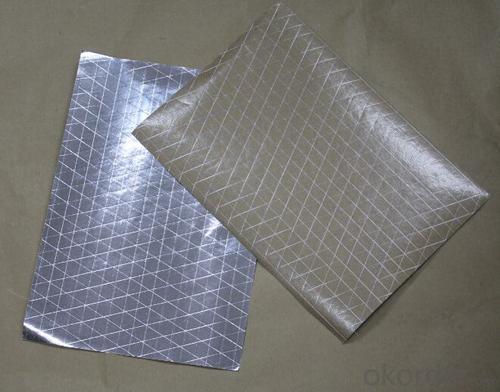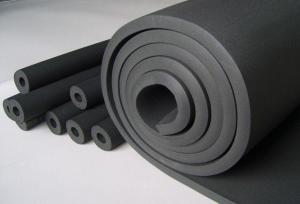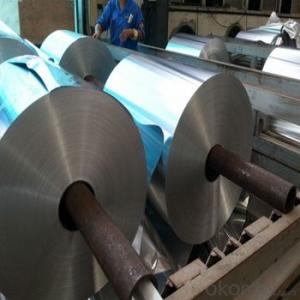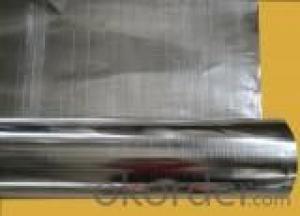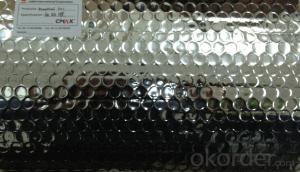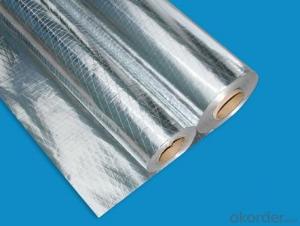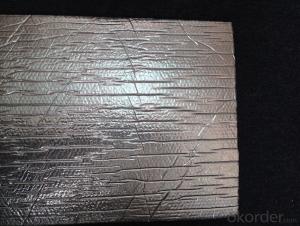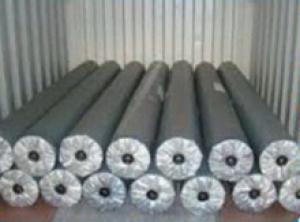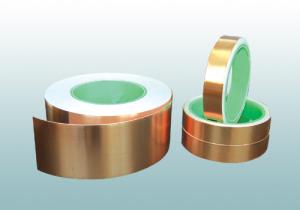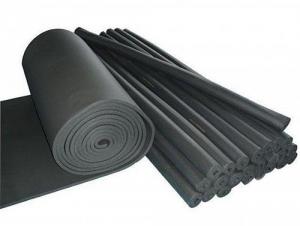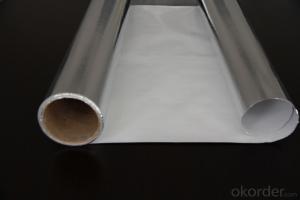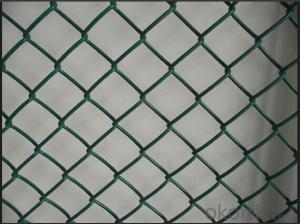Aluminum Foil Facing Insulation Flexible Ducts Bubble Foil Glasswool
- Loading Port:
- Tianjin
- Payment Terms:
- TT OR LC
- Min Order Qty:
- 3000 m²
- Supply Capability:
- 30000 m²/month
OKorder Service Pledge
OKorder Financial Service
You Might Also Like
Specifications
aluminum foil bubble insulation manufacture
thermal insulation
Construction:
Tri-directional scrim Heat Sealing Aluminum Foil : Corrosion resistance Coating/Foil: 7Microns/anti-heat adhesive/Kraft: 60 or 50gsm /Tri-way Scrim/Vinyl: 25Micons.
Application:
Heat Sealing Aluminum Foil is suitable for on-line lamination with thermal insulation such as glass wool blanket, rock wool or mineral wool by heating.
An thermal insulation facing to block radiant heat coming into house through the roof and walls during the summer and retain indoor heat generated during the winter. Heat Sealing Aluminum Foil facing also used as a water vapor barrier in air conditioning ductworks and cold rooms.
Benefit:
Heat FSK Facing is no need applying extra adhesive. Better corrosion resistance.
Does not contain hazardous chemicals or harmful materials that cause itching or respiratory problems.
A radiant barrier stops 97% of radiant heat transfer which improves the performance of the insulating material. Scrim reinforced for strength and durability.
Roll Width: 1.2M, 1.25M.etc
Roll Length: Up to 2500M.
- Q: This question asks about the proper way to store aluminum foil to keep it facing the right way for easy use.
- <p>To store aluminum foil facing the right way, first use up one side completely. Then, fold the remaining foil in half with the shiny side facing out. Place the folded foil back into the box or container, shiny side up. When you need to use it next, the shiny side will be facing you, making it easy to tear off. To keep it flat and wrinkle-free, you can place a piece of cardboard inside the box, or roll it around a clean, empty paper towel tube.</p>
- Q: Is it safe and effective to use aluminum foil facing material for wrapping rice for storage purposes?
- <p>Using aluminum foil facing to wrap rice for storage is not recommended. Aluminum foil facing is not designed for food contact and may contain chemicals that could contaminate the rice. Instead, opt for food-grade materials like plastic bags or containers specifically designed for food storage. These materials are safer and help maintain the freshness and quality of the rice.</p>
- Q: Describe the process of aluminum foil facing in a few sentences.
- <p>Aluminum foil facing is a process used to laminate aluminum foil to a substrate, typically for decorative or functional purposes. The process begins with the preparation of the substrate, ensuring it is clean and free of contaminants. Then, a layer of adhesive is applied to the substrate. The aluminum foil is then placed onto the adhesive-covered substrate and pressure is applied to ensure proper adhesion. The laminated product is then cured, which can involve heat or UV light to set the adhesive. Finally, the product is trimmed and inspected for quality before being packaged and shipped. This process is used in various industries, including construction, automotive, and consumer goods.</p>
- Q: What are the potential health risks associated with cooking food using aluminum foil?
- <p>Cooking with aluminum foil can potentially lead to the leaching of aluminum into the food, which may have health implications. While the body naturally eliminates small amounts of aluminum, excessive intake can be harmful. Aluminum has been linked to neurological disorders, including Alzheimer's disease, although the connection is not definitively proven. It's also important to note that the amount of aluminum that leaches into food during cooking is generally considered to be low. However, for those concerned about aluminum exposure, it's advisable to minimize the use of aluminum foil in cooking, especially for acidic foods which can increase the rate of aluminum leaching.</p>
- Q: Can aluminum foil be used as a facing material to construct a sandwich?
- <p>While aluminum foil is not traditionally used as a facing material for making sandwiches, it can technically be used to wrap a sandwich for storage or transportation. However, it's not suitable for direct contact with the sandwich ingredients as it can tear or leave aluminum particles on the food, which is not ideal for consumption. Instead, use bread or other edible facing materials to construct the sandwich, and aluminum foil for wrapping it if needed.</p>
- Q: This question asks for the method of wrapping food using aluminum foil.
- <p>To wrap food with aluminum foil, first clean your hands and ensure the foil is shiny side out. Cut a piece of foil large enough to cover the food completely. Place the food in the center of the foil. Bring the edges of the foil together over the food, then fold and crimp the edges to seal tightly. Ensure there are no gaps to prevent the food from drying out or the foil from tearing. For more complex shapes, you can double the foil and create a pouch or tent, folding the edges to secure the shape. Always handle food with clean hands to maintain hygiene.</p>
- Q: Is it possible to use aluminum foil facing as a substitute for a roasting pan?
- <p>While aluminum foil facing can be used in some baking situations, it is not recommended to use it as a direct substitute for a roasting pan. Aluminum foil is not designed to withstand the high temperatures of a roasting process and can melt or warp, leading to uneven cooking and potential safety hazards. A proper roasting pan is made to handle high heat and distribute it evenly, ensuring that your food cooks properly. For best results and safety, use a designated roasting pan or a baking sheet with a higher heat tolerance.</p>
- Q: What are the considerations or safety measures one should take into account when using aluminum foil in the kitchen for cooking purposes?
- <p>When using aluminum foil for cooking, it's important to avoid direct contact with acidic or alkaline foods as this can cause the foil to corrode and potentially release aluminum into the food. Also, refrain from using foil with non-stick cookware as it can damage the non-stick surface. Ensure that the foil is not wrapped too tightly around food, especially when cooking in the oven, to prevent uneven cooking. Avoid using foil with sharp edges or corners that could tear. Lastly, do not use aluminum foil in the microwave for long periods or with high power as it can cause sparks or fires. Always follow the manufacturer's guidelines for safe use.</p>
- Q: This question asks about the distinction between aluminum foil made from new raw materials and that made from recycled materials.
- <p>Yes, there is a difference between 'virgin' and 'recycled' aluminum foil. Virgin aluminum foil is produced from newly mined bauxite ore and is considered to be of higher purity. It is often preferred for applications requiring high quality and consistency. Recycled aluminum foil, on the other hand, is made from aluminum waste that has been collected, sorted, and reprocessed. It is more environmentally friendly as it reduces waste and energy consumption. However, recycled aluminum foil may have slight variations in thickness and quality due to the recycling process.</p>
- Q: This question asks for the proper cleaning method for aluminum foil facing after it has been used.
- <p>To clean aluminum foil facing after use, first let it cool down to avoid burns. Then, gently scrape off any food residue with a plastic scraper or the edge of a credit card. Avoid using metal scrapers as they can scratch the surface. Wipe the surface with a damp cloth and mild dish soap to remove any grease or grime. Rinse with warm water and dry thoroughly. For stubborn stains, you can use a mixture of baking soda and water to create a paste, apply it to the stain, let it sit for a few minutes, then scrub gently and rinse. Always check the manufacturer's instructions for any specific care requirements.</p>
Send your message to us
Aluminum Foil Facing Insulation Flexible Ducts Bubble Foil Glasswool
- Loading Port:
- Tianjin
- Payment Terms:
- TT OR LC
- Min Order Qty:
- 3000 m²
- Supply Capability:
- 30000 m²/month
OKorder Service Pledge
OKorder Financial Service
Similar products
Hot products
Hot Searches
Related keywords
